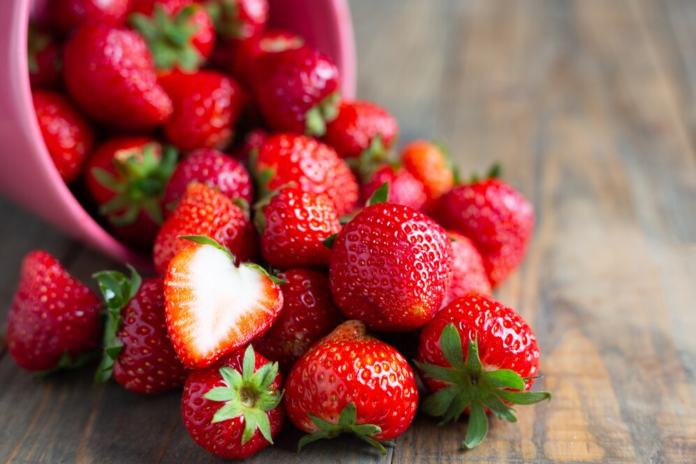Strawberries are delicious, nutritious, and versatile fruits enjoyed by people of all ages. However, like many fresh produce items, strawberries can harbor dirt, pesticides, and bacteria that require thorough cleaning before consumption. In this comprehensive guide, we’ll walk you through the step-by-step process of washing strawberries to ensure they’re safe, clean, and ready to enjoy.

Why Wash Strawberries?
Before delving into the washing process, let’s understand why it’s essential to wash strawberries:
- Remove Pesticide Residues: Conventionally grown strawberries may contain pesticide residues from agricultural practices. Washing helps remove these residues, reducing exposure to potentially harmful chemicals.
- Eliminate Dirt and Debris: Strawberries can accumulate dirt, dust, and debris during harvesting, handling, and transportation. Washing removes surface contaminants, making the berries cleaner and more appetizing.
- Reduce Bacteria and Pathogens: Washing strawberries helps eliminate bacteria, including harmful pathogens like E. coli and Salmonella, which can cause foodborne illnesses if ingested.
- Improve Flavor and Freshness: Clean strawberries taste better and have a fresher, more appealing appearance. Washing removes any unpleasant residues or odors, enhancing the overall flavor and enjoyment of the berries.
Step-by-Step Guide to Washing Strawberries
Follow these simple steps to wash strawberries effectively:
Step 1: Gather Your Supplies
Before you begin, gather the following supplies:
- Fresh strawberries
- Colander or sieve
- Large bowl or basin
- Distilled white vinegar (optional)
- Cold water
Step 2: Prepare the Washing Solution
Fill a large bowl or basin with cold water. Optionally, you can add a splash of distilled white vinegar to the water. Vinegar helps remove bacteria and extends the shelf life of strawberries by inhibiting mold growth. Use approximately 1 part vinegar to 3 parts water.
Step 3: Soak the Strawberries
Place the strawberries in the bowl of water, ensuring they are fully submerged. Allow the berries to soak for 5 to 10 minutes. During this time, gentle agitation or swishing can help dislodge dirt and debris from the berries’ surface.
Step 4: Rinse Thoroughly
After soaking, transfer the strawberries to a colander or sieve and rinse them under cold running water. Use your fingers to gently rub the berries as you rinse to ensure thorough cleaning. Continue rinsing until the water runs clear, indicating that the strawberries are clean.
Step 5: Drain and Dry
Once rinsed, allow the strawberries to drain in the colander for a few minutes to remove excess water. Avoid shaking or patting the berries dry, as this can cause bruising or damage. Instead, gently tilt the colander to allow water to drain naturally.
Step 6: Remove Stems (Optional)
If desired, you can remove the stems from the strawberries using a small paring knife or strawberry huller. Simply insert the tip of the knife or huller near the stem and gently twist to remove it.
Step 7: Store or Enjoy
Once washed and dried, the strawberries are ready to eat or use in your favorite recipes. If you’re not consuming them immediately, store the strawberries in the refrigerator in a breathable container lined with paper towels to absorb excess moisture.
Tips for Washing Strawberries
- Inspect Before Washing: Before washing, inspect the strawberries for any signs of mold, mushiness, or damage. Discard any berries that appear spoiled or unfit for consumption.
- Use Organic Strawberries: Whenever possible, choose organic strawberries, which are grown without synthetic pesticides or chemicals. While organic strawberries may still require washing, they typically have lower pesticide residues than conventionally grown berries.
- Avoid Soaking for Too Long: While soaking can help remove dirt and bacteria, avoid leaving strawberries in water for an extended period, as they can become waterlogged and lose flavor.
- Wash Before Consumption: Wash strawberries just before eating or using them in recipes to maintain freshness and minimize bacterial growth.
Conclusion
Washing strawberries is a simple yet essential step in ensuring their safety, cleanliness, and freshness. By following the step-by-step guide outlined above and incorporating best practices for washing produce, you can enjoy delicious strawberries with confidence, knowing that they’re free from contaminants and ready to be enjoyed in all their sweet and juicy glory. Whether eaten fresh, added to salads, or used in desserts, properly washed strawberries are a delightful and nutritious addition to any diet.


